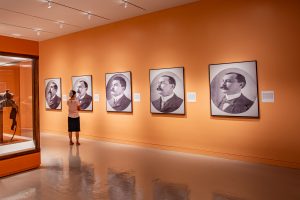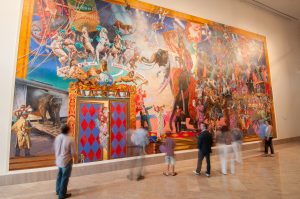Run away to the circus! Immerse yourself in circus history, be wowed by incredible human and animal feats, study the amazing logistics of circus management, or try your hand at walking the wire. The Circus Museum’s vast and varied collections are on view throughout two different buildings: the Historic Circus Galleries and the Tibbals Learning Center. Read on to learn more about what you’ll discover in each space.
Now Open! The Greatest Show On Earth® Gallery
Be sure to visit our newest exhibit, The Greatest Show On Earth® Gallery! This permanent exhibit continues the story found throughout the Circus Museum, of how Ringling Bros. and Barnum & Bailey® grew to become one of the most well-recognized brands in the world.
The Gallery is located in the Circus Museum, Tibbals Learning Center, 2nd Floor.
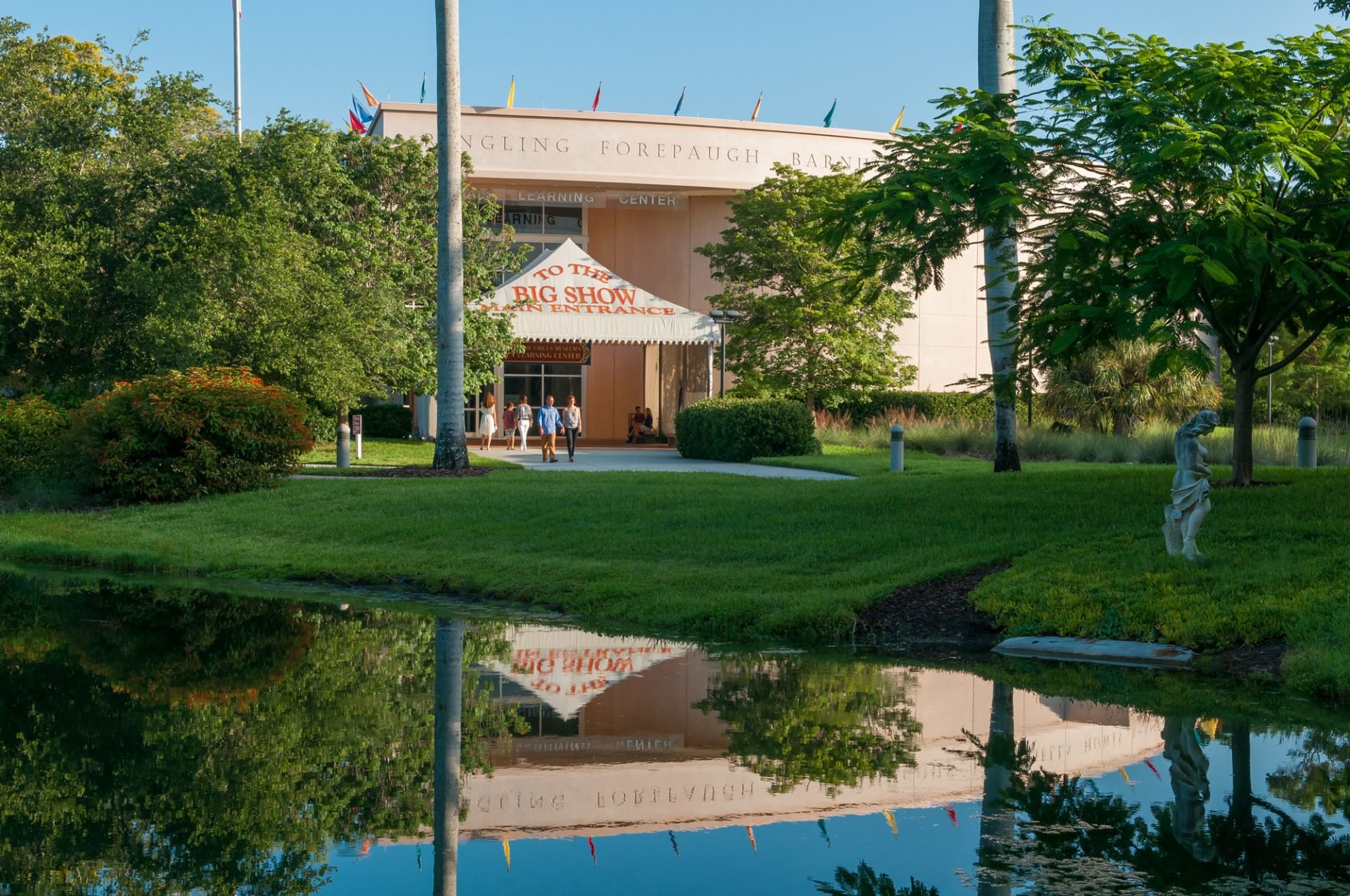
Visit the Circus Museum
Access to the Circus Museum is included with Museum Admission. Be sure to visit the The Howard Bros. Circus Model in the Tibbals Learning Center and John and Mable’s magnificent turn-of-the-century private railcar the Wisconsin, located in the Historic Galleries.
Tickets & Admission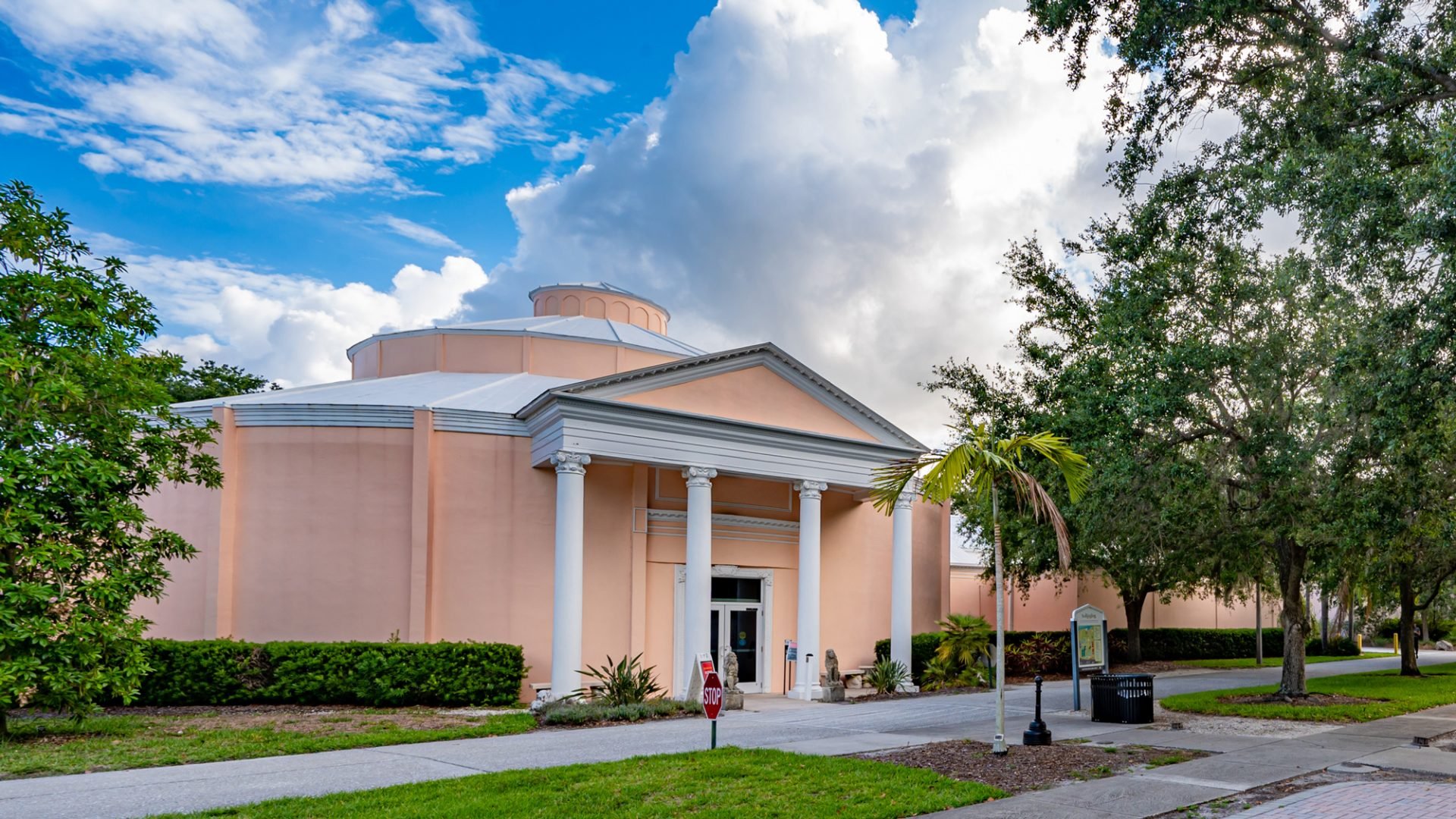
Historic Circus Galleries
In 1948, The Ringling’s inaugural director A. Everett “Chick” Austin opened the first-of-its-kind Museum of the American Circus, promising it would “evoke the circus spirit” and that “big top performers will regard it as a unique, authentic center of circus art.” Thanks to the widespread support of the circus community, the museum quickly grew in size, scope, and success.
Over the years, new spaces were added to the historic building to accommodate its growing collections. In 2019, the Historic Circus Galleries underwent extensive renovation and reinstallation, improving the ability to display time-honored favorite objects while also allowing new stories to come to light.
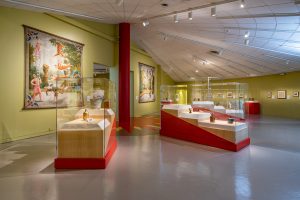
The historic Rotunda gallery, which dates back to the Circus Museum’s opening in 1948, invites visitors to encounter curiosities of the Circus collection. The gallery provides a space for rotating the rich diversity of objects that are part of the collection through thematic displays organized around history and cultural trends.
Two banners painted by Frans De Vos for a small Belgian circus in the early 1900s are centerpieces of the space. Just as they once welcomed audiences to a circus, they now draw museum visitors into the galleries. These paintings depict a variety of acrobatic feats set against pastoral scenes, reminding us that all forms of the arts are integrated into the world of the circus.
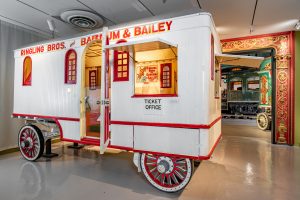
The center gallery features the White Ticket Wagon, originally built in 1911. This beautiful example of circus craftsmanship greets museum visitors as they enter the space, just as visitors to the historic tented circus would have encountered a ticket wagon upon arrival to the circus lot.
Ringling Family Galleries
The Ringling Family Galleries feature objects that relate directly to the family and the early years of their enterprise, from saddles embossed with the names of the brothers to the 1884 herald for the Yankee Robinson and Ringling Bros. Great Double Shows (the only time the Ringling name took second billing). Discover how the brothers first began in the industry, the role they each played, and their secrets to success.
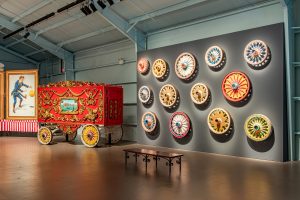
This cavernous space includes many colossal highlights, including John and Mable’s magnificent turn-of-the-century private Pullman railcar the Wisconsin, historic circus wagons of all kinds, an artistic display of painted wagon wheels, and a sideshow bannerline.
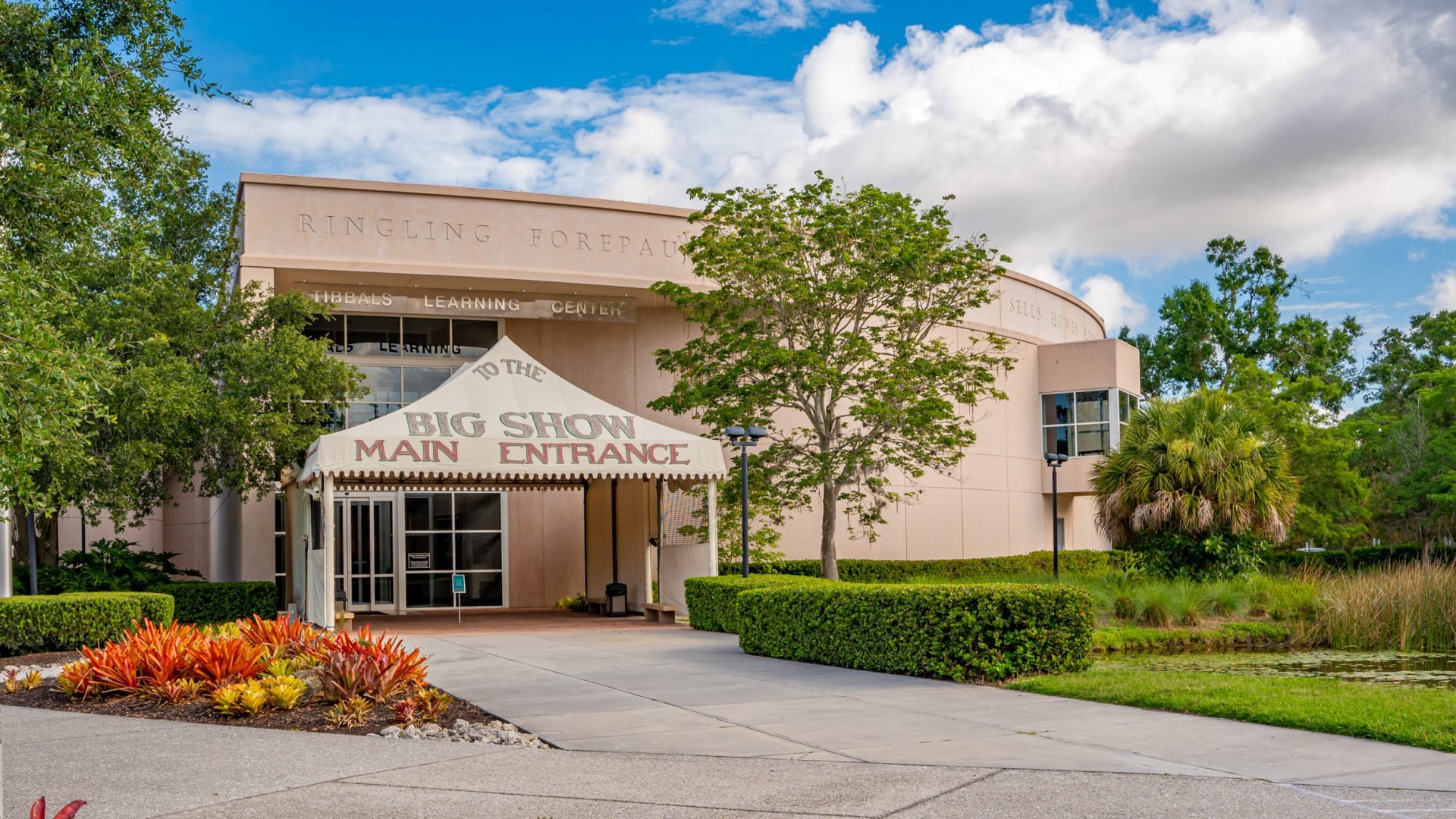
Tibbals Learning Center
The Tibbals Learning Center, made possible by the generosity of Howard and Janice Tibbals, is full of unexpected delights and hands-on learning opportunities. Visitors to the space can immerse themselves in the circus—past and present—through a variety of engaging activities, installations, and exhibitions.
Front Lobby
Brightly festive circus music and a giant mural titled “The Greatest Show on Earth®” first welcome visitors to the Tibbals Learning Center. The mural, painted by William Woodward in 1990, captures the exuberant personalities and infectious enthusiasm of Ringling Bros. and Barnum & Bailey® performers, setting the stage for the rest of the visit.
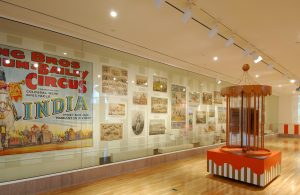
This display space features rotating exhibitions drawn from The Ringling’s vast collection of posters relating to circus history and its allied arts, such as Wild West shows, side shows, and other travelling entertainments.
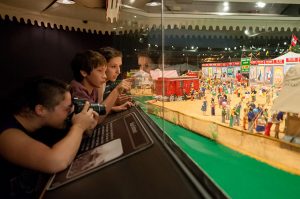
The Howard Bros. Circus Model consists of more than 42,000 pieces and spans 3,800 square feet. Created by philanthropist and circus lover Howard Tibbals, the model is a historically accurate rendition of an early twentieth-century circus. Marvel at the logistical engineering required to move the circus’s entire “tented city” from town to town each day, peek behind the scenes to learn what it was like to work for the circus, and relive your own memories of the big top.
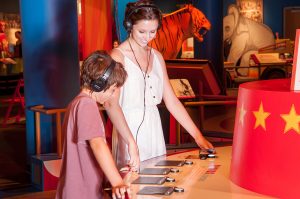
Inspired to try your hand at the circus arts? In these galleries, you can walk the tightrope, balance on horseback, or squeeze into a clown car. Multimedia presentations, including music and video, are included throughout the gallery, creating a fully immersive experience into the breathtaking world of circus performance.
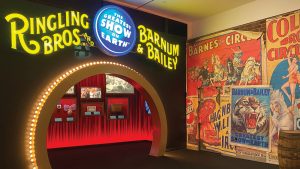
Located on the second floor of the Tibbals Learning Center, this new addition to the museum celebrates the era of modern circus that began with Irvin Feld’s purchase of Ringling Bros. and Barnum & Bailey® in 1967. The Greatest Show On Earth® Gallery modernizes the museum’s expansive history of the circus by exploring the first fifty years of the Feld family’s stewardship during which the spectacle of the show brought the circus experience to new heights.
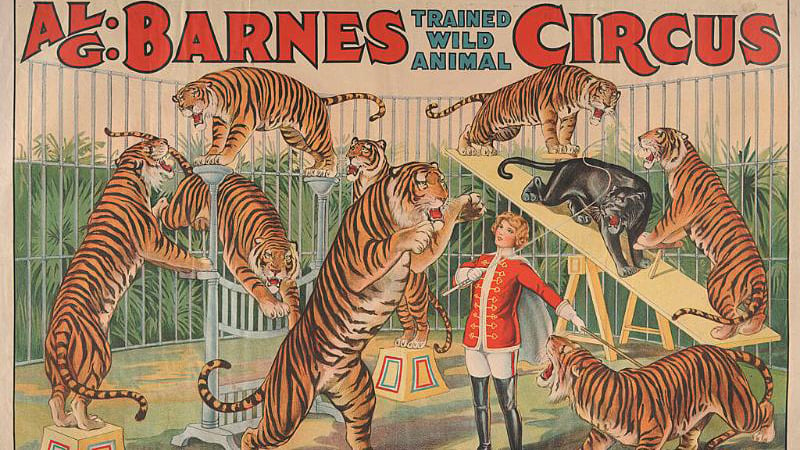
Digital Collections
Dig deeper and explore our comprehensive circus collection online.
Many of the objects that are displayed in our galleries (posters, photographs, costumes, design drawings, props, wagons, and more) are accessible via The Ringling’s eMuseum.
Additional research and archival ephemeral materials (films, scrapbooks, program booklets, and other printed materials) are available through DigiNole, the Florida State University’s digital library.
